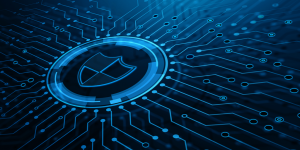The COVID-19 pandemic has highlighted the importance of digital adoption and ultimately digital transformation. In fact, according to a new McKinsey Global Survey it is estimated that COVID-19 accelerated digital transformation by around seven years.
Organizations across the world quickly shifted to the cloud, and specifically software-as-a-service (SaaS) applications, to maintain team productivity, minimize disruption to business operations and ensure efficiency. However, increased integration technologies such as IoT, cloud computing, edge computing, and AI raise new challenges around security, privacy, and the reliability of underlying systems that a business utilizes, which require the support of robust cybersecurity.
In recent research conducted by Forbes that analyzed 130,000 apps, it found that 76% of applications had at least one vulnerability. So with digital innovation comes an ongoing conflict between the need to innovate and the need to mitigate risk. Moving forward, it’s essential that businesses address inherent security flaws in order for the advantages of SaaS applications to be realized.
Staying secure through data and visibility
The first thing to do is assess which applications are to be adopted and review how often changes should be made. Businesses should also collect and record as much data from the virtual enterprise as possible, including data collected from monitoring user’s laptops, application logins, and the network border. This enables enterprises to more accurately identify any compromises.
Digital supply chains and sales channels
As businesses increasingly rely on a variety of technologies to enhance and manage their supply chains — from end-to-end digital connectivity and cloud services to blockchain and robotics — these innovations can increase efficiency and visibility, as well as reduce errors and costs. However, it can also introduce risks, such as data loss. To mitigate this, companies can establish cybersecurity and data privacy controls to ensure transmission and storage of data is secure.
Automation and analytics
Technologies such as AI and robotic process automation (RPA) can help automate tasks such as data entry and enhance business processes, but automation also can introduce risks. To reduce risk, businesses should endeavor to create well-crafted contracts to manage big data partnerships, limit the data used in data sets to the minimum data necessary, and use anonymized data when possible.
Remote working is here to stay, which means that SaaS applications are here for the long run too. In order to prevent cybersecurity attacks and compromises, organizations should be taking steps to secure and protect their assets.
























